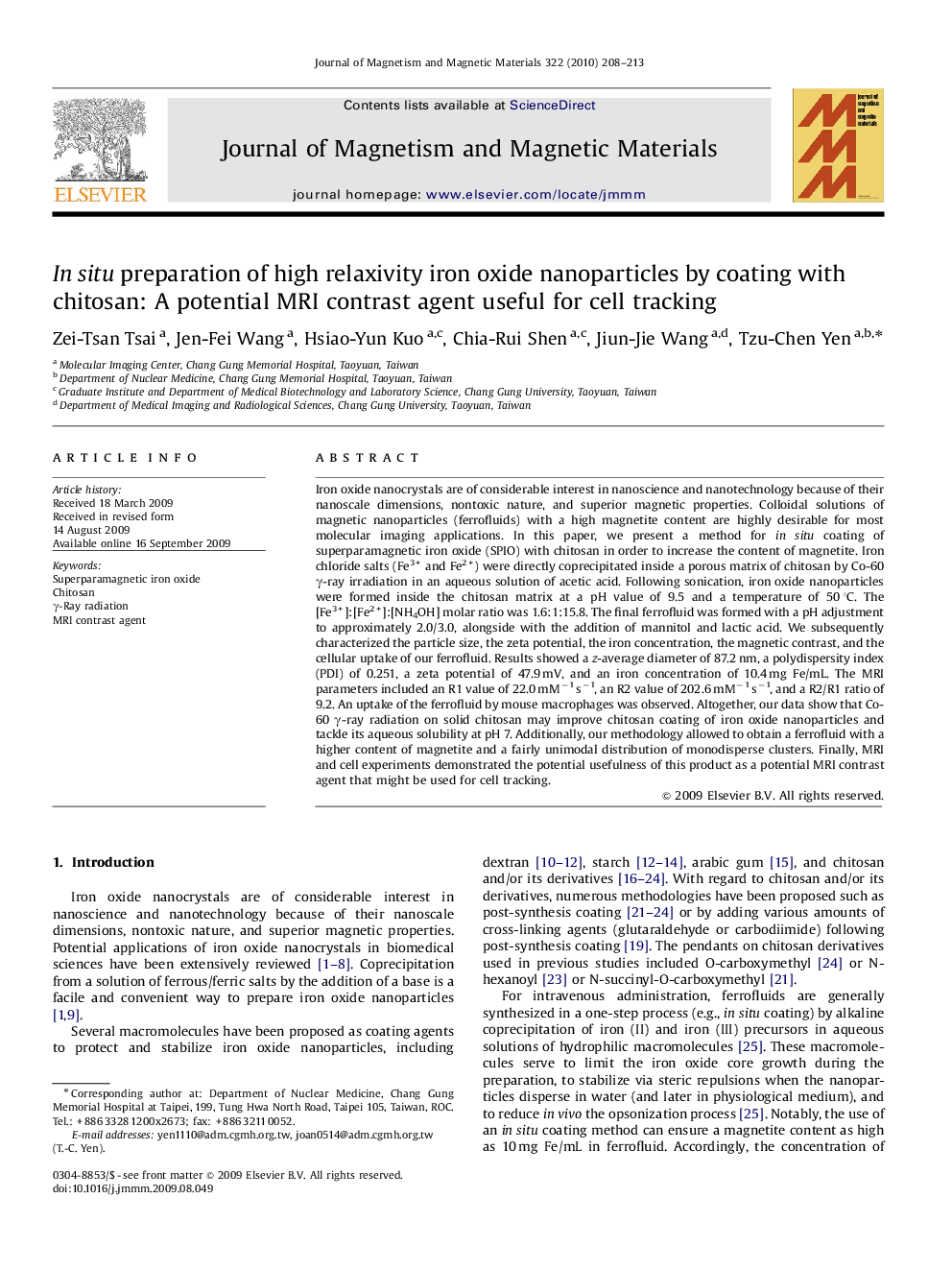| کد مقاله | کد نشریه | سال انتشار | مقاله انگلیسی | نسخه تمام متن |
|---|---|---|---|---|
| 1801635 | 1024573 | 2010 | 6 صفحه PDF | دانلود رایگان |

Iron oxide nanocrystals are of considerable interest in nanoscience and nanotechnology because of their nanoscale dimensions, nontoxic nature, and superior magnetic properties. Colloidal solutions of magnetic nanoparticles (ferrofluids) with a high magnetite content are highly desirable for most molecular imaging applications. In this paper, we present a method for in situ coating of superparamagnetic iron oxide (SPIO) with chitosan in order to increase the content of magnetite. Iron chloride salts (Fe3+ and Fe2+) were directly coprecipitated inside a porous matrix of chitosan by Co-60 γ-ray irradiation in an aqueous solution of acetic acid. Following sonication, iron oxide nanoparticles were formed inside the chitosan matrix at a pH value of 9.5 and a temperature of 50 °C. The [Fe3+]:[Fe2+]:[NH4OH] molar ratio was 1.6:1:15.8. The final ferrofluid was formed with a pH adjustment to approximately 2.0/3.0, alongside with the addition of mannitol and lactic acid. We subsequently characterized the particle size, the zeta potential, the iron concentration, the magnetic contrast, and the cellular uptake of our ferrofluid. Results showed a z-average diameter of 87.2 nm, a polydispersity index (PDI) of 0.251, a zeta potential of 47.9 mV, and an iron concentration of 10.4 mg Fe/mL. The MRI parameters included an R1 value of 22.0 mM−1 s−1, an R2 value of 202.6 mM−1 s−1, and a R2/R1 ratio of 9.2. An uptake of the ferrofluid by mouse macrophages was observed. Altogether, our data show that Co-60 γ-ray radiation on solid chitosan may improve chitosan coating of iron oxide nanoparticles and tackle its aqueous solubility at pH 7. Additionally, our methodology allowed to obtain a ferrofluid with a higher content of magnetite and a fairly unimodal distribution of monodisperse clusters. Finally, MRI and cell experiments demonstrated the potential usefulness of this product as a potential MRI contrast agent that might be used for cell tracking.
Journal: Journal of Magnetism and Magnetic Materials - Volume 322, Issue 2, January 2010, Pages 208–213